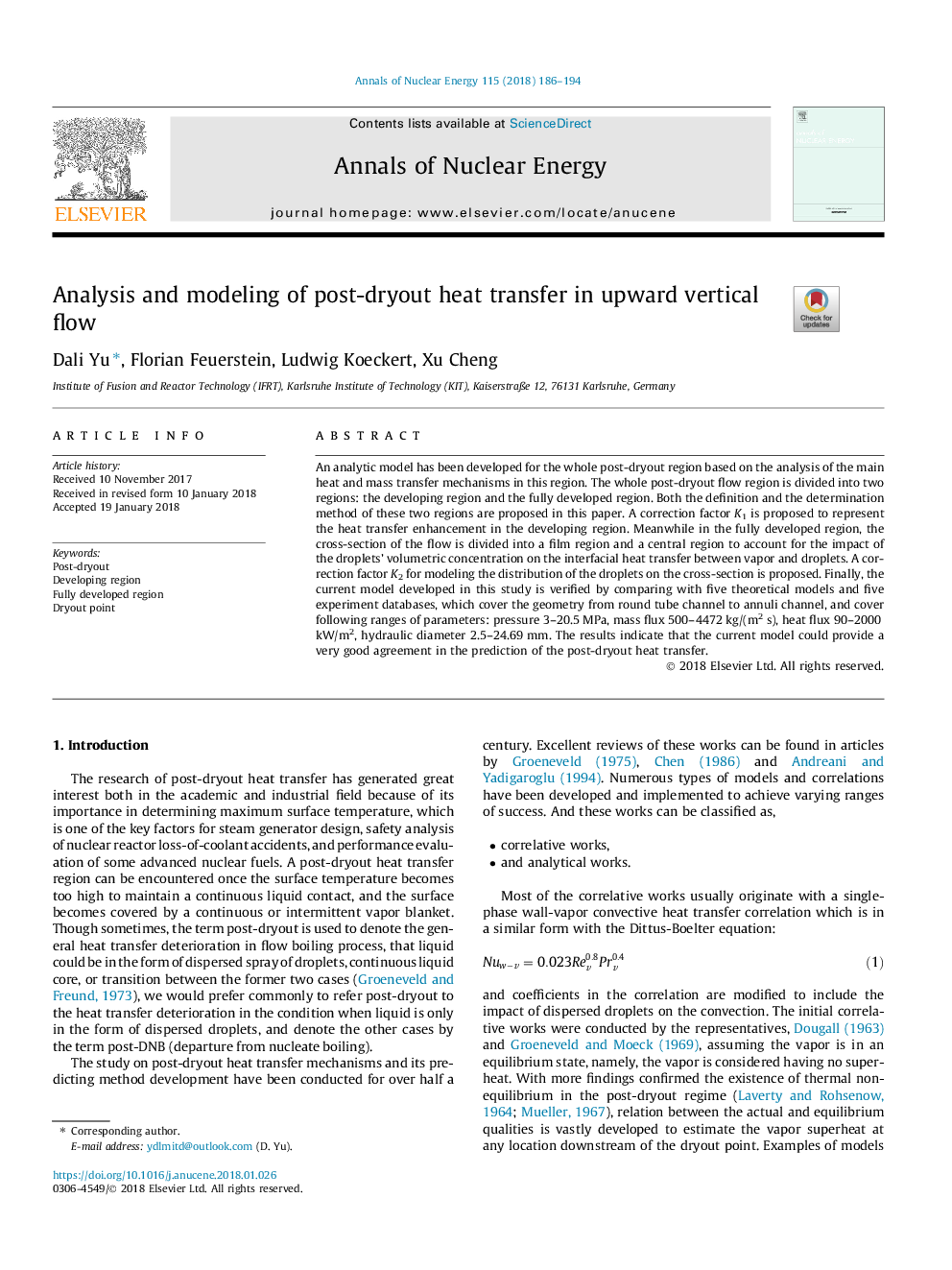| Article ID | Journal | Published Year | Pages | File Type |
|---|---|---|---|---|
| 8067072 | Annals of Nuclear Energy | 2018 | 9 Pages |
Abstract
An analytic model has been developed for the whole post-dryout region based on the analysis of the main heat and mass transfer mechanisms in this region. The whole post-dryout flow region is divided into two regions: the developing region and the fully developed region. Both the definition and the determination method of these two regions are proposed in this paper. A correction factor K1 is proposed to represent the heat transfer enhancement in the developing region. Meanwhile in the fully developed region, the cross-section of the flow is divided into a film region and a central region to account for the impact of the droplets' volumetric concentration on the interfacial heat transfer between vapor and droplets. A correction factor K2 for modeling the distribution of the droplets on the cross-section is proposed. Finally, the current model developed in this study is verified by comparing with five theoretical models and five experiment databases, which cover the geometry from round tube channel to annuli channel, and cover following ranges of parameters: pressure 3-20.5â¯MPa, mass flux 500-4472â¯kg/(m2â¯s), heat flux 90-2000â¯kW/m2, hydraulic diameter 2.5-24.69â¯mm. The results indicate that the current model could provide a very good agreement in the prediction of the post-dryout heat transfer.
Keywords
Related Topics
Physical Sciences and Engineering
Energy
Energy Engineering and Power Technology
Authors
Dali Yu, Florian Feuerstein, Ludwig Koeckert, Xu Cheng,
